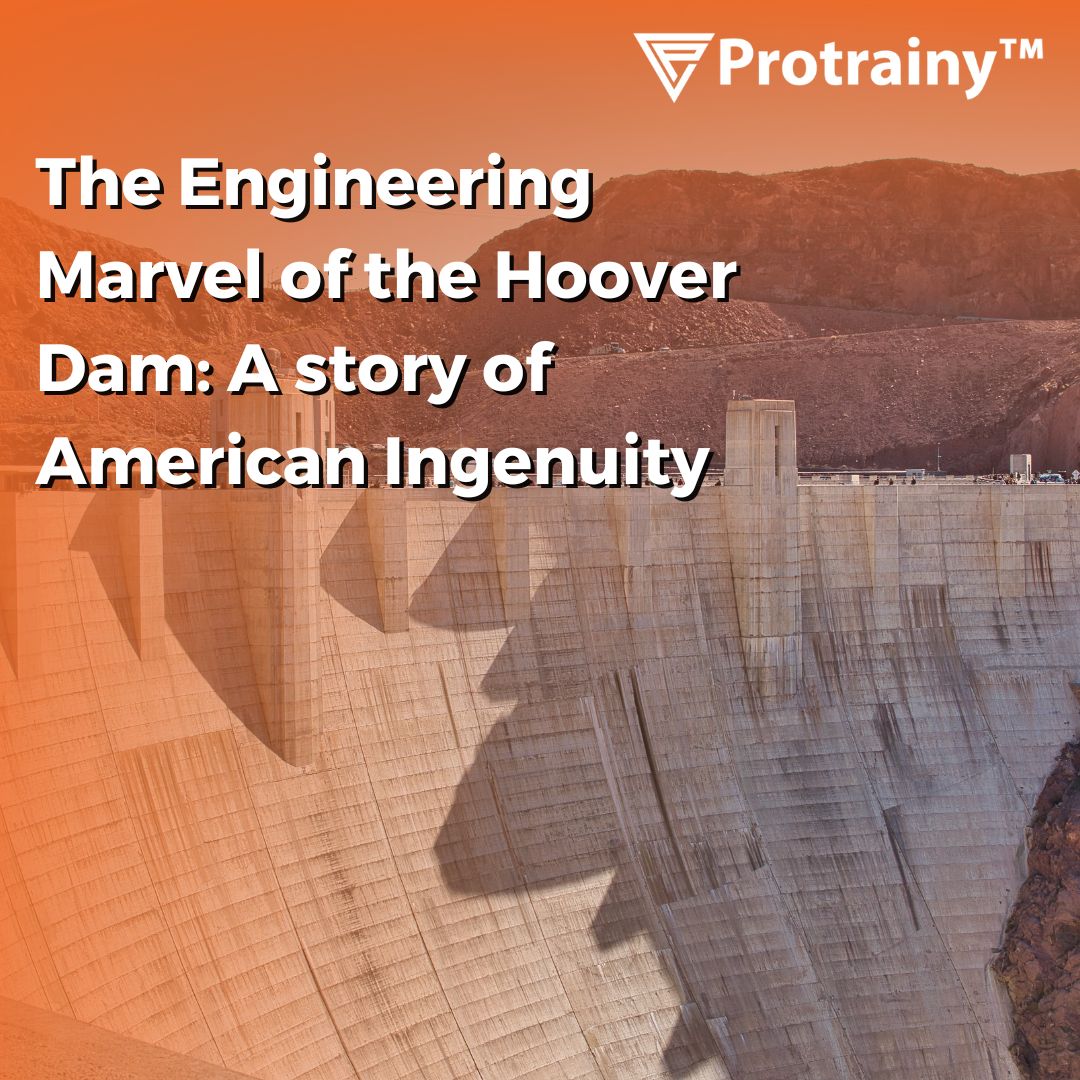Blogs
- Home
- Blogs
The Engineering Marvel of the Hoover Dam: A story of American Ingenuity
Protrainy | March 30, 2023, 9:01 a.m.

The Hoover Dam is one of the most impressive engineering feats in American history. Built during the Great Depression, it transformed a barren desert into a fertile oasis, providing millions of people with water, power, and jobs. It also stands as a testament to human ingenuity, overcoming enormous technical and environmental challenges.
In this blog post, we will explore some of the fascinating facts and figures behind this monumental structure, and how it continues to serve as a vital resource and a popular tourist attraction.
- The Hoover Dam was initially called Boulder Dam, after the nearby Boulder Canyon where it was planned to be built. However, the site was changed to Black Canyon, where the Colorado River was narrower and more suitable for damming. The name Hoover Dam was officially adopted in 1947, in honor of President Herbert Hoover, who played a key role in initiating and funding the project.
- The construction of the Hoover Dam began in 1931 and was completed in 1936, two years ahead of schedule and within budget. It was a massive undertaking that involved thousands of workers, many of whom were unemployed during the economic crisis. The workers faced harsh conditions, such as extreme heat, dust, noise, and danger of accidents. About 100 workers died during the construction, mostly from falling or drowning.
- The Hoover Dam is the highest concrete arch dam in the United States, measuring 726 feet (221 meters) high and 1,244 feet (379 meters) long at the crest. It contains 4.4 million cubic yards (3.36 million cubic meters) of concrete, enough to build a highway from New York to San Francisco. The concrete was poured into huge blocks, each weighing about 60 tons. To prevent cracking from thermal stress, an elaborate system of pipes and refrigeration units was used to cool down the concrete as it cured.
- The Hoover Dam impounds Lake Mead, which is one of the largest artificial lakes in the world. It extends for 115 miles (185 kilometers) upstream and covers an area of 247 square miles (640 square kilometers). It can store up to 28.5 million acre-feet (35.2 billion cubic meters) of water, enough to irrigate 2 million acres (800,000 hectares) of land or supply 20 million people for a year. The lake also supports a variety of wildlife and recreational activities, such as fishing, boating, and hiking.
- The Hoover Dam is a major source of hydroelectric power, generating up to 2,080 megawatts of electricity from 17 turbines installed at the dam's base. The power is distributed to Nevada, Arizona, and California, meeting the needs of about 1.3 million people. The dam also helps regulate the flow and quality of the Colorado River, preventing floods and siltation downstream and providing water for irrigation and domestic use.
- The Hoover Dam also had a significant impact on the engineering and construction industries. The techniques and technologies developed during the construction of the dam were used in other large-scale construction projects, such as the Golden Gate Bridge and the World Trade Center.
- The Hoover Dam is a national landmark and a cultural icon, attracting about 7 million visitors every year. It offers spectacular views of the dam, the lake, and the surrounding landscape, as well as tours through the dam's interior and exhibits on its history and operation. It also features a memorial bridge that spans across the canyon, providing a new perspective on the dam's engineering marvel. The bridge is named after Mike O'Callaghan and Pat Tillman, two heroes of public service who died in Afghanistan.
The Hoover Dam is more than just a dam; it is a story of American ingenuity and perseverance. It showcases how human creativity and cooperation can overcome nature's obstacles and create lasting benefits for society. The construction of the dam was a massive undertaking that required innovation, hard work, and collaboration. The techniques and technologies developed during the construction of the dam have had a lasting impact on the engineering and construction industries. It serves as a reminder of what can be achieved when people come together to solve complex problems and build something truly great.
To get a deeper understanding of more such engineering concepts, check out the website of Protrainy.
